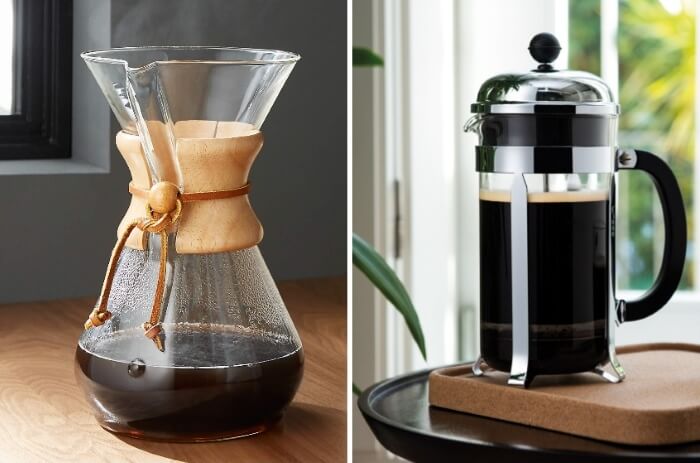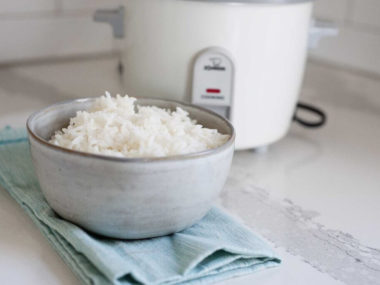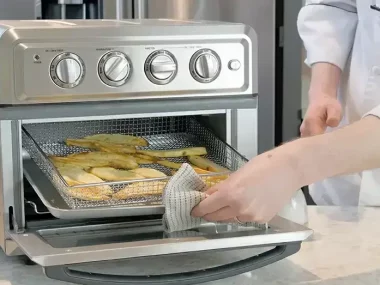Coffee is more than just a beverage; it's a sensual experience that varies in aroma, flavor, texture, and strength depending on how it's made and with what equipment. Both the Chemex and the French press are examples of extremely well-liked manual coffee makers.
French press advocates will argue that their preferred method of brewing coffee is superior to the Chemex because it better brings out the coffee's unique flavors. However, the paper filtering system utilized in Chemex coffee makers ensures that the coffee's natural oils are not diluted in the extraction process and hence do not make it into the cup. A clear, sediment-free drink with a refreshing taste is what we get with this.
So which do you pick: a French Press or a Chemex?
Chemex Coffee Maker
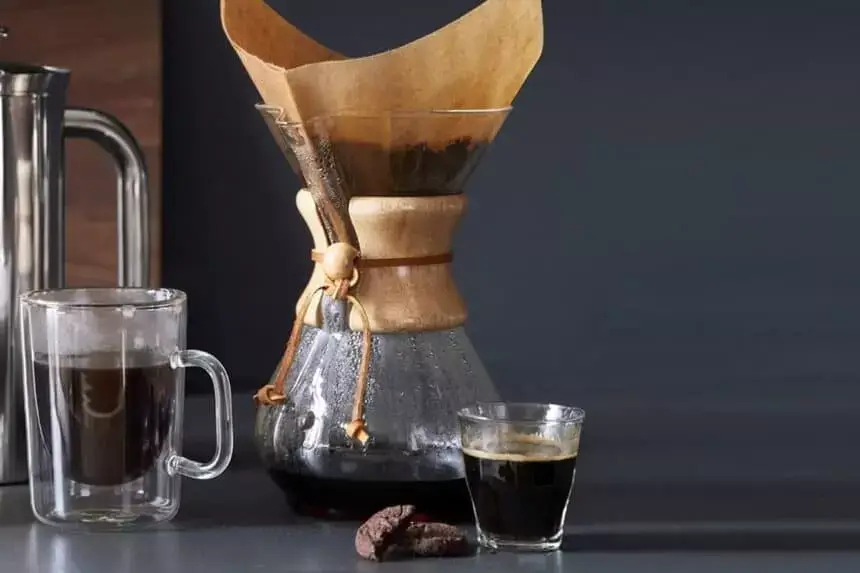
Since Dr. Peter Schlumbohm created the Chemex coffee machine in 1941, it has remained essentially unchanged. Its distinctive hourglass shape and detachable, leather-tied wooden handle remain unchanged. A Chemex, similar to the one on display in New York's Museum of Modern Art for the past seven decades, is still available for purchase today.
Many modern items prioritize aesthetics above practicality. However, it is not the case with Chemex. The best part about this coffee maker is that it makes great coffee and is quite simple to operate. If you're a purist about your coffee, you should try using a Chemex coffee maker.
If you appreciate timeless elegance, you won't find anything better than a Chemex coffee maker. Most reviewers agree that the Pour-Over Glass Coffeemaker from Chemex® is the most reliable option due to its non-porous borosilicate glass structure, making it both the most traditional and sturdy model.
How Does It Work?

As any coffee connoisseur will tell you, the Chemex coffee maker is the real deal. The coffee that results from the very slow and delicate brewing process is worth the effort.
The paper filters used in the Chemex system prevent the coffee's natural oils from escaping during the extraction process. As a result, you get a refreshing drink that is not heavy on the stomach, has no sediment, and has its own distinct flavor.
Some models of the Chemex coffee maker have removable and washable stainless steel filters. They're an upgrade from the classic paper filters. This is more eco-friendly, but it might alter the coffee's flavor by preventing the particles and oils from being retained as efficiently.
Making coffee using a Chemex is simple, but it takes longer than with other methods.
The final result is very clean thanks to this method. The trick is in the thick filter, which captures all the sediment that other methods leave behind. Bamboo filters, which give your coffee a whole different flavor, are available at some stores.
Because of the cleanliness left by the filter, the liquid will be an amber or brownish yellow color rather than a dark brown.
How to Use It?
To preserve the coffee's purity and full flavor, milk and sugar should not be added.
This method requires a finer grind than a French press but coarser than sand since a sand-like consistency would leave no space for the water to seep in, preventing any extraction.
The recommended pouring time is between 3 and 5 minutes.
To brew a flavorful and aromatic coffee using a Chemex coffee maker, follow these steps:
Heat two cups of water to 205°F, or simply bring it to a boil and let it cool for 30 seconds. Tip: Preheat and rinse the filter with about 1/2 cup of additional hot water.
Prepare a medium grind with 30 grams of coffee beans (about 2 tablespoons).
Place a paper filter in the Chemex coffee pot, and rinse it thoroughly with the preheated water to remove any paper taste and to preheat the glass.
Add the freshly ground coffee into the filter, and pour enough hot water over it to saturate it. Let it bloom for a minute, allowing the carbon dioxide bubbles to escape.
At the end of the brewing process, slowly pour the remaining hot water over the coffee, using a side-to-side or circular motion to ensure even extraction.
Once the coffee is fully filtered, discard the grounds and savor the delicious coffee.
Tip: To keep the coffee hotter, you can heat the Chemex on a glass or gas burner, or use a separate adapter for electric burners.
Benefits:
The Chemex coffee maker has several advantages, including:
- It's a manual brewing method that doesn't require electricity, making it portable and eco-friendly.
- It has a sleek and elegant design that enhances your kitchen décor.
- It produces a clean and light texture cup of coffee with a distinct flavor profile.
- It allows you to enjoy the brewing process and experiment with different brewing variables.
- It uses a thick paper filter that removes most of the coffee oils and sediment, resulting in a smooth and clean coffee.
- It's made of high-quality borosilicate glass that doesn't absorb flavors or odors and is easy to clean.
- It's dishwasher safe
- It can also be used for brewing tea and other infusions (since filtering and infusion involve similar steps).
Drawbacks:
The downside, of course, is the time required for brewing. Due to the multiple steps and waiting times that requires more attention and patience than automatic coffee makers for proper extraction, the process is somewhat more time-consuming than with other coffee machines. You must first heat the water before slowly pouring it in and waiting for the process to finish. Some additional drawbacks are:
- It requires buying paper filters, which can be an ongoing expense.
- Cleaning the filter and glass can be a bit challenging and time-consuming.
- It's a bit pricey compared to other manual brewing methods.
- The resulting coffee is lighter and less full-bodied than some people prefer.
French Press Coffee Maker
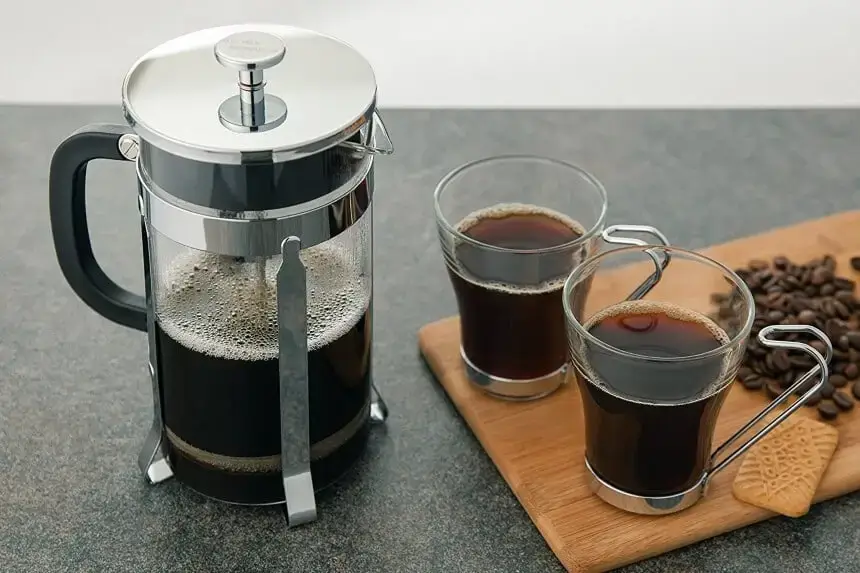
The French press is a highly popular coffee maker among baristas. With over 170 years of history, it's a professional tool that extracts coffee in its most intense form, satisfying even the most demanding palates.
This plunger or French coffee machine, like the Chemex, operates without electrical cables. It's designed to produce a strong-flavored drink that's easy and fast to make, with a capacity that typically ranges from three to eight cups.
How Does It Work?
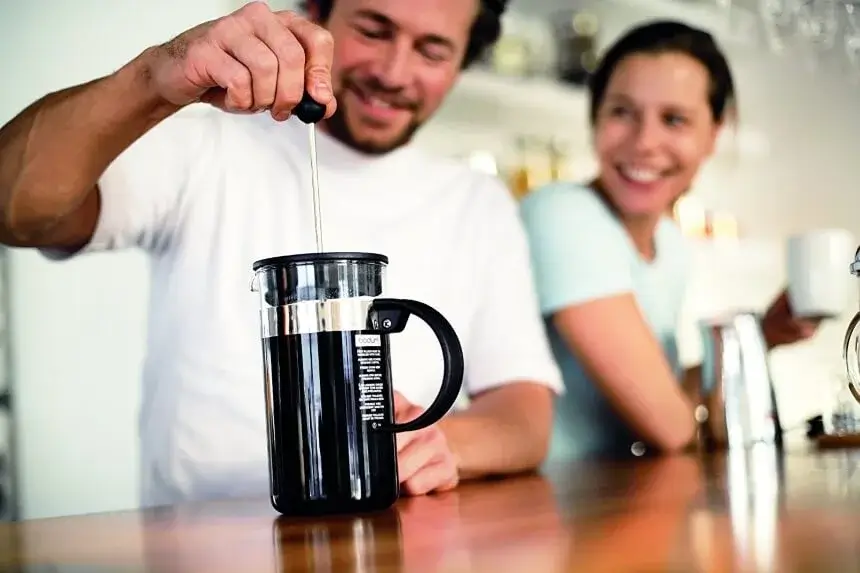
The French press combines water and coffee for approximately four minutes. The plunger is then pushed down to separate both ingredients, leaving you with a drink that's free of grounds but still retains all the aroma and flavor of the coffee.
During the process, the coffee and water are free to mix for several minutes. Unlike other methods, there is no filter needed since the plunger catches the ground coffee. However, the plunger's mesh is quite fine, so it's likely that small coffee residues will pass through, making the coffee stronger in flavor due to its sediments.
Compared to the Chemex, one of the benefits of the French Press is that it does not require additional filters, making it an economical option.
Additionally, the French press is perfect if you prefer to add milk or cream to your coffee, or if you enjoy experimenting with different coffee flavors regularly.
How to Use It?
When handling the glass with a French press, it is crucial to exercise extreme caution, as replacements are difficult to come by. In the event of breakage, purchasing a new French press may be necessary.
While boiling water is necessary, it is essential to allow it to cool for several seconds to achieve the perfect temperature. Ideally, the water should be at approximately 90 degrees when it comes in contact with the coffee. Therefore, allowing it to cool for around 45 seconds is recommended.
If the water is too rich in minerals or too few, the final taste of the coffee can be compromised, even if the coffee itself is of excellent quality. To ensure a good cup of coffee with a French press, one should use bottled water with a low fixed residue or filtered tap water.
For a strong and energizing cup of coffee, the ideal coffee-to-water ratio is crucial. Typically, one teaspoon of coffee per cup is used, but several attempts may be necessary to find the perfect proportion.
When using a French press, it is best to grind the coffee beans yourself to achieve optimal results, as the coffee powder available in the market is usually too fine. A coarse grind is ideal.
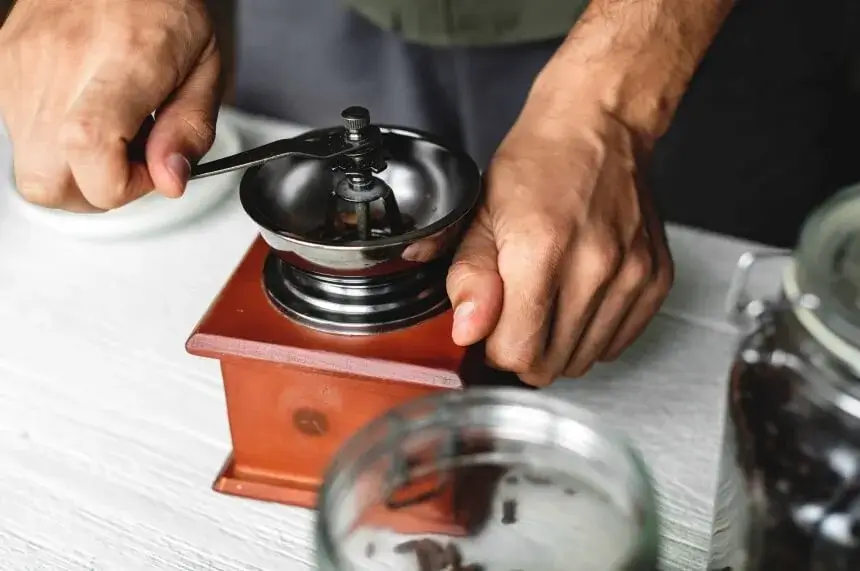
Advantages
The French press offers several advantages, particularly in preserving the flavor and natural oils of coffee, resulting in a richer and more intense taste. It maximizes the extraction of coffee, creating a full-bodied and enjoyable experience.
Other advantages of using a French press include:
- They fully extract the coffee's flavor
- Their suitability for professional coffee-making
- The ease of preparation without the risk of burning the coffee
- They are versatile enough to prepare other drinks, such as tea and infusions
- They are easy to clean and maintain and clean
Drawbacks
- They require heating water in a separate container
- They require balancing the water-to-coffee ratio properly to avoid a weak or watery taste
- The coffee produced tends to be high in caffeine
- Leaves a significant amount of residue
- French presses can be expensive
Chemex vs. French Press: In-detail Comparison
In this section, we will compare Chemex and French press coffee brewing methods in terms of brew time. Below is a detailed comparison and a tabled comparison:
Brew Time
- Chemex takes approximately 5 to 6 minutes to brew coffee.
- French press takes about 4 minutes to brew coffee, which is faster than Chemex as you don't need to set up the filter.
Winner: French press
Ease of Use
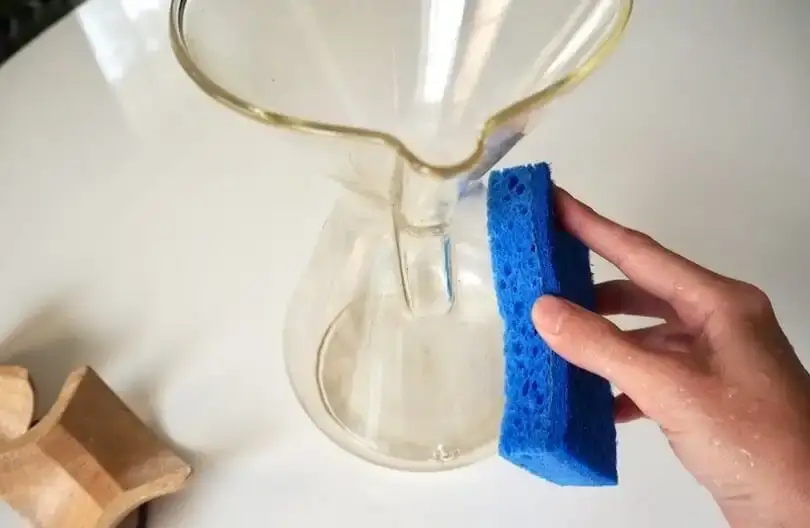
The French press is easier to use and brews faster than the Chemex since it doesn't require a filter setup. However, the Chemex has a faster and easier cleanup process, giving it an advantage in this criterion.
Winner: Chemex
Type of Coffee to Use
When it comes to the type of coffee to use, a Chemex brews best with a light to medium roast Arabica bean from a single origin. On the other hand, a French press brews best with a medium to dark roast bean and can bring good results with either a single origin Arabica or a blend of Arabica and Robusta.
Winner: French press
Taste
The filtration system of the Chemex removes thicker residues, resulting in a clean and clear brew. But this process also strips away the rich taste of the coffee. On the other hand, the French press doesn't involve a paper filter process and preserves the natural oils of the coffee. This makes for a richer taste, particularly when freshly ground beans are used.
Winner: French press
Versatility
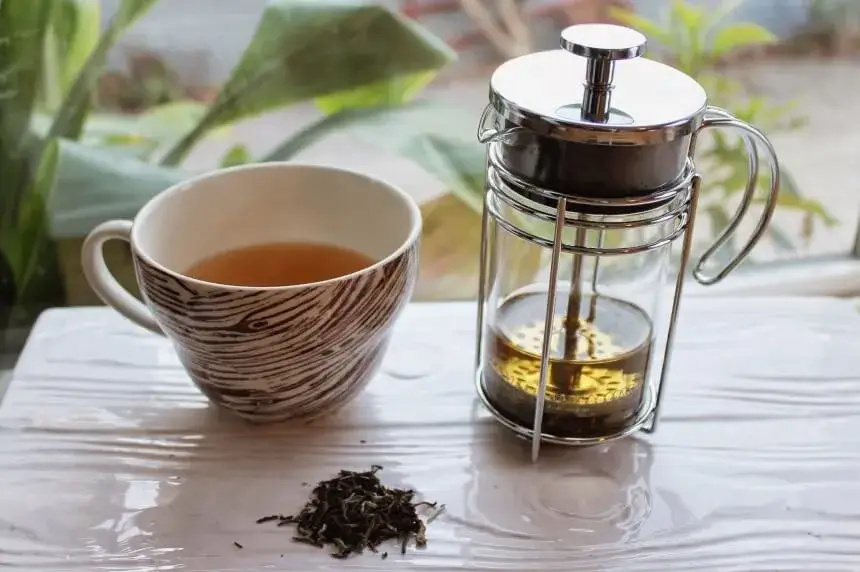
Header | CHEMEX | FRENCH PRESS |
|---|---|---|
Ease of use | Involved | Meduim |
Brew method | Filtration or dripping | Steeping |
Control over the brew | More flavor on the outside | Bland on the outside |
Brewing time | 4 minutes | 5 minutes |
Resulting brew | Yes | Yes |
Sizes available | 3-cup, 6-cup, 8-cup | 8 oz., 16 oz., 23 oz., 36 oz. |
Materials | Glass | Stainless steel, glass, plastic |
Price range | $30 – $70 | $10 – $70 |
Final Thoughts
The Chemex allows for precise control over all the settings, including water temperature, flow rate, pre-infusion time, etc. This gives you complete freedom to make the coffee you desire. It is simpler to use than the French Press and as straightforward as using an electric coffee maker. However, preparing coffee to your liking with this machine will still take 5 to 6 minutes, compared to the 3 to 4 minutes required with a French Press.
On the other hand, the French Press uses a coarse ground coffee and boiling water mixture that is left to sit for around 4 minutes before the lid with the plunger is placed on top. Afterward, the plunger is pressed down, and you can mix the elements with the natural oils.
Throughout this comparison article of Chemex vs. French Press, we have seen what both coffee makers are and what they have to offer. The French Press appears to be the superior choice in almost every comparison aspect. The only criterion where the Chemex seems to have an edge is in ease of use and cleaning.
